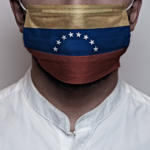In their now justly famous 2018 book The Coddling of the American Mind, Jonathan Haidt and Greg Lukianoff proposed “Safetyism” as the name for a novel “moral culture” that had originated on college and university campuses and was rapidly colonizing the larger American culture. Haidt and Lukianoff define Safetyism as “a culture or belief system in which safety has become a sacred value, which means that people become unwilling to make trade-offs demanded by other practical and moral concerns.”
This was followed by other cultural treatments, such as Bradley Campbell and Jason Manning’s The Rise of Victimhood Culture, some of which more emphatically connected this novel Safetyist culture to the new form of political leftism that has been increasingly ascendant since at least 2013. It’s often been referred to as “social justice” leftism but is increasingly being labeled “Wokeism,” “woke leftism,” or some variant thereof. The core of this ideology consists in a combination of philosophical postmodernism and political leftism; like classical Marxism, it dictates that all social phenomena are to be viewed through a lens of oppression and domination, but it extends this Marxist thesis beyond economic class to encompass all social identities whatsoever. The goal of this ideology is to categorize all such identities as either “oppressor” or “oppressed” and to politically mobilize the latter against the former.
When the COVID-19 pandemic hit, my first thought was that a Safetyist culture, as ours had increasingly become, was the worst possible type of culture for handling such a threat to public health. My concern wasn’t only that such a culture would prioritize safety from the virus over all other concerns, such as the negative impacts of economic lockdowns. I also worried that COVID-19 protective measures would provide cover for the spread of Wokeism.
The Alliance of Safetyism and Wokeism
Start your day with Public Discourse
Sign up and get our daily essays sent straight to your inbox.Why would I think this? Because Safetyism and Wokeism are fellow travelers, joined at the hip in many more contexts than not. They find their greatest purchase in the same demographics, most prominently what Charles Murray identified in Coming Apart as the “new upper class,” the elite-educated members of which “run the nation’s economic, political, and cultural institutions.” This class includes politicians and the wealthiest percentile of managers and professionals, as well as “journalists, academics, and public intellectuals in general.” Safetyism and Wokeism also originate from the members of this “new upper class” and the institutions they control, not least academia and the postmodernist leftists dominating it. And the two ideologies also share a host of characteristic features. Because bureaucratic elites’ heavy-handed response to COVID-19 is rooted in Safetyism, submission to COVID-19 Safetyism also strengthens Wokeism, even if only indirectly.
A prime feature of both Safetyism and Wokeism is the semantic inflation of safety-related terms and concepts—including, most prominently, “safety” itself. As Haidt and Lukianoff note, “In the twentieth century, the word ‘safety’ generally meant physical safety. . . . But gradually, in the twenty-first century, on some college campuses, the meaning of ‘safety’ underwent a process of ‘concept creep’ and expanded to include ‘emotional safety.’” In the case of COVID-19 Safetyism, the lines between physical safety and psychological comfort are blurred almost as frequently as in the case of Wokeism. The most glaring example of this is the infamous “wearing cloth facemask while alone outside” phenomenon, something I observe with astonishing frequency.
Other parallels are hard to miss. One of the most obvious is the institution of a novel orthodoxy, the censorship of any heterodox opinions, and the ostracism of heretics who dissent from the orthodoxy. In the case of COVID-19 Safetyism, we see safety measures being carried out under the aegis of “The Science,” as though scientific findings always reach uniform conclusions that conveniently align on one side of the political divide. Invocations of “The Science” often function dogmatically rather than rationally in this context, and any dissent is vigorously suppressed. For example, now-credible theories about the virus accidentally leaking from a Wuhan research lab were initially met with an exasperated dismissal that was nearly uniform in the mainstream media. Often in the name of safety, progressives invoke science as a supposedly indisputable basis for their positions.
If people recognize significant improvements in a given form of oppression, the basis for a political ideology almost entirely founded on the goal of solving that problem would be severely weakened.
Another parallel between Wokeism and Safetyism is captured by Douglas Murray’s “runaway train” metaphor in his 2019 book, The Madness of Crowds: namely, the more identity-based oppression is actually eliminated, the more inflated claims of oppression become relative to reality, which propels the proposal of more extreme policies (the closer the train gets to its destination, the more it speeds up). The most familiar examples of such “progressophobia” from Wokeism concern race, as when Ibram Kendi characterized the Civil Rights Act of 1964 by saying “racism did not end—it progressed,” or as when Charles Blow wrote that “American racism has evolved and become less blunt, but it has not become less effective” since the era of slavery and the Civil War.
Such claims echo ones made earlier by academics, such as Critical Race Theory progenitor Derrick Bell, who in 1987 wrote that “progress in American race relations is largely a mirage,” and Microaggression Theory progenitor Derald Wing Sue, who in 2010 wrote that racial microaggressions “may have significantly more influence on anger, frustration, and self-esteem than traditional overt forms of racism.”
If conditions have not in fact improved for a historically oppressed group, then the unsafety of that group would indeed warrant radical, progressive policies to rectify this. Conversely, if we admit that progress has been made on a given problem, we would have to admit that the threat has subsided, which would diminish the need for affirmative policies that purportedly combat it. In other words, the political activation potential for supposedly oppressed groups would decrease. If people recognize significant improvements in a given form of oppression, the basis for a political ideology almost entirely founded on the goal of solving that problem would be severely weakened. Moreover, it would threaten the perceived legitimacy of those empowered to enforce those policies.
Safetyism and Medical Theater
The ballooning of what is considered “safety” has also led to resistance to rational argument about the relevant evidence. Consider many universities’ mask policies. Masks are often required for those indoors at all times except when alone in a room, any type of mask satisfies this requirement, and the vast majority of people wear cloth or surgical masks that are only really effective in preventing spread by respiratory droplets. But transmission by respiratory droplet occurs primarily through coughing and sneezing, which are symptoms of COVID-19, and all persons exhibiting such symptoms are typically barred from public university spaces by school policy. So what rational purpose does requiring non-n95 masks serve?
At this point, some people might propose that such policies constitute “medical theater.” This point is worth considering for a moment. What is the purpose of theater? Generally speaking, theater aims to elicit audience emotions rather than conduct rational argument. And it is impossible to miss how frequently Safetyist rhetoric, specifically vis-à-vis COVID-19 policies, is framed in terms of feelings of safety that are decidedly irrational.
Rather than signifying objective reality, Woke and Safetyist language alike more often cater to subjective desires and are used to manipulate emotions.
At Rice University, an assistant teaching professor and health sciences advisor recently went on record as saying: “I am fully vaccinated, but I have two young children who are ineligible to be vaccinated. . . . With masks, I personally feel more comfortable being in the classroom and have less worries about exposing my children to the virus through me.” Never mind that the sort of transmission these masks prevent is already prevented by other policies, and never mind that children face miniscule risk from COVID-19. The point, at least from the perspective of medical theater, isn’t to make people safer, but to make them feel safer.
Still, why not just wear a mask without objection if it does in fact make others feel safer—isn’t this an altruistic end worth some minor inconvenience on your part? I hear this argument all the time, often formulated as: “Just don’t be a jerk.” If it sounds familiar, that’s because it was first and frequently deployed in defense of mandating the use of people’s “preferred pronouns.” Rather than signifying objective reality, Woke and Safetyist language alike more often cater to subjective desires and are used to manipulate emotions. Both Safetyism and Wokeism elevate people’s subjective and emotional experiences (so long as they point in a progressive direction) over biological reality and scientific fact.
Resisting Wokeism and Safetyism’s Expanding Frontiers
The point is that Safetyism and Wokeism leverage our altruistic instincts to effect submission to irrational policies that were never designed to be rationally justifiable in the first place. Instead, it seems increasingly clear, both ideologies function sociologically like religion. More and more people seem to be noticing this, both in relation to COVID-19 Safetyism and in relation to Wokeism. But what goes less remarked upon is the connection between these two novel forms of secular religion, and specifically how they mutually reinforce one another.
For consider: if you are willing to submit to irrational COVID policies for the sake of helping others feel safer—however irrational you may think those feelings are—then why wouldn’t you do the same in the case of the various norms and policies of Wokeism? The future frontiers of Wokeism are often unpredictable, and its awakenings might demand of dissenters impossible violations of conscience—as they already have for many.
As Safetyism’s star continues to rise, so will Wokeism’s, and for the same sorts of reasons. And if Wokeism is the great threat to free speech, impartial justice, and liberal education that it is so often—and rightly—made out to be, then its connection to Safetyism should be sufficient reason to resist unreasonable COVID-19 policies. It is time for both conservatives and traditional liberals to wake up to this reality, which requires more consistently translating our convictions into action.














